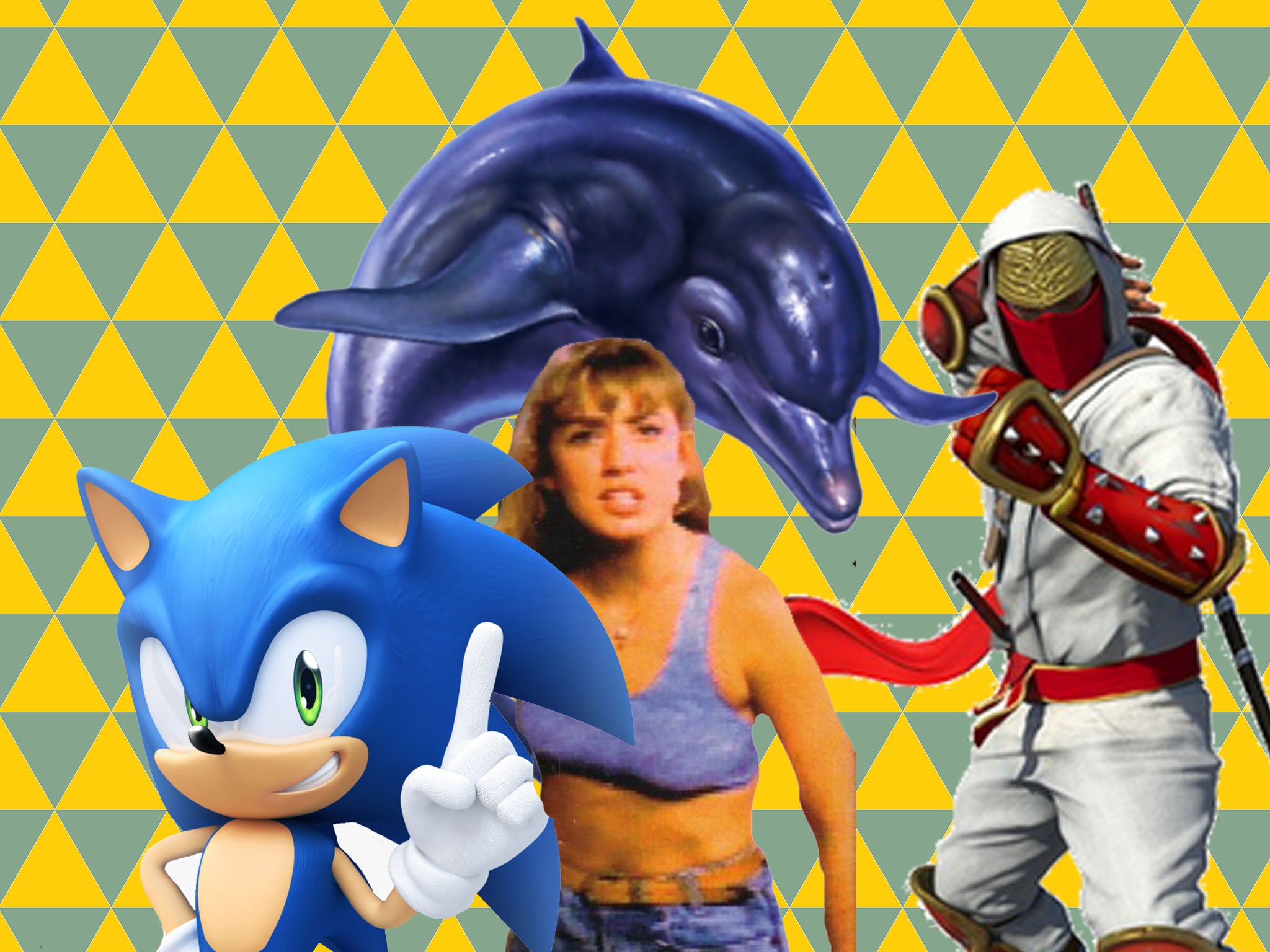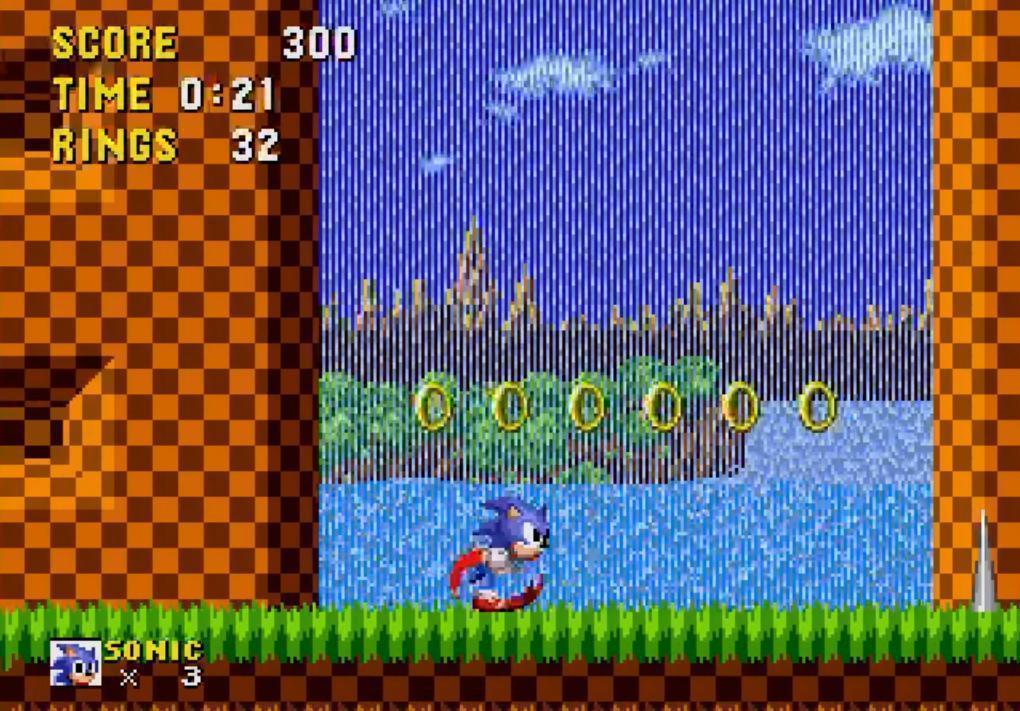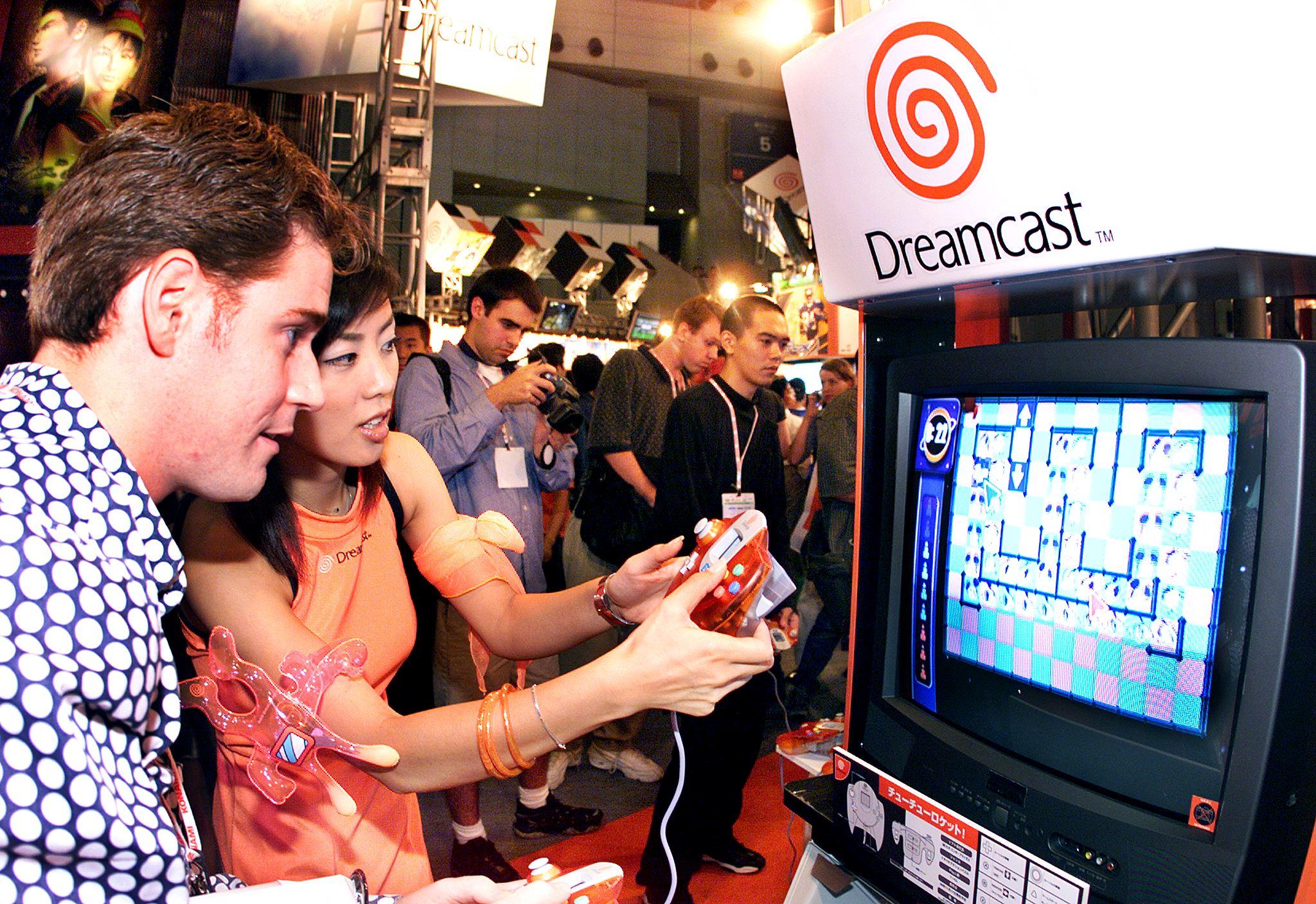How Sega conquered the video games industry with Sonic the Hedgehog – and then threw it all away
Sonic the Hedgehog was the perfect mascot to fuel the developer’s rise to power, but the gaming giant was toppled by corporate dysfunction and cutthroat competition, says Ed Power

Your support helps us to tell the story
From reproductive rights to climate change to Big Tech, The Independent is on the ground when the story is developing. Whether it's investigating the financials of Elon Musk's pro-Trump PAC or producing our latest documentary, 'The A Word', which shines a light on the American women fighting for reproductive rights, we know how important it is to parse out the facts from the messaging.
At such a critical moment in US history, we need reporters on the ground. Your donation allows us to keep sending journalists to speak to both sides of the story.
The Independent is trusted by Americans across the entire political spectrum. And unlike many other quality news outlets, we choose not to lock Americans out of our reporting and analysis with paywalls. We believe quality journalism should be available to everyone, paid for by those who can afford it.
Your support makes all the difference.A cry of blue murder went up in April 2019 when Paramount Pictures released the first trailer for its much-anticipated, long-delayed Sonic the Hedgehog movie. The Sega video game icon had been reimagined as a Cronenberg-esque nightmare. Its fur was both too real and creepily incorporeal. And then there were those dead eyes gazing from a face half Saturday morning cartoon, half Edvard Munch watercolour. The entire internet essentially ran away screaming.
Scary Sonic was put out of his misery with a drastic redesign that gave the character a cuddly gloss ahead of its release this weekend. The makeover added an estimated $5m (£3.8m) to the already hefty $90m (£69m) budget (much of it presumably accounted for by flesh-and-blood stars Jim Carrey and James Marsden). Yet something about that original fumble felt weirdly apt. To turn a beloved figurehead of early nineties couch-bound entertainment into a cobalt creep-show from our darkest dreams isn’t just a misstep. It is a catastrophic error. Exactly the sort that Sega committed over and over through its ultimately sorry history in console gaming.
Sonic the Hedgehog ruled the primordial video gaming scene of three decades ago like a tiny, button-nosed dinosaur. He was cooler and much, much faster than Nintendo’s platform-hopping Italian plumber Mario. That mattered a great deal when he was unleashed upon gamers 30 years ago today (23 June). Long before Sony and Xbox carved up console gaming, Sega and Nintendo were sworn enemies, twin colossi obsessed with outdoing each other.
Sonic and Mario were soon at the frontline of this conflict. Though sharing a superficial cuteness, they represented radically different philosophies. Sonic was the bad boy with lightening feet and an air of mischief. Mario was slower, wackier – clearly for kids and adults who also wished they could go back to being kids.
All these decades later, Nintendo continues to sell millions of consoles and to pump out Mario sequels. Sega’s empire is, by contrast, dust in the wind. Today it is largely focused on games for third-party systems. You can, for instance, enjoy Sonic the Hedgehog on Nintendo Switch. It’s like Voldemort and Harry Potter teaming up for Quidditch.
Before Sonic, Sega had played second fiddle to Nintendo. The origins of the two companies were also very different. While its mortal foe had been founded in Kyoto in 1889 as a manufacturer of playing cards, Sega’s roots were far more contemporary. The company was established in Tokyo in 1960 by expat American businessmen. One of the founders, Martin Bromley, had actually witnessed the Japanese attack on Pearl Harbour. Now here he was, sitting in his high-rise office in Tokyo’s Shinagawa ward, thinking of ways to satiate Japan’s bottomless craving for electronic distractions.

Success initially came through the importation of gaming machines, pinball tables and jukeboxes. In the late sixties, it moved into coin-operated video games. Sega entered the home console market in 1982 with the SG-1000 system. But it failed to challenge Nintendo’s dominance in Japan. In this scenario, Nintendo was Super Mario, Sega one of the hapless Goombas who earn the plumber points when he bounces on their heads.
All that changed with the Sega Mega Drive, which came out in Japan in 1988 and Europe in 1990 (and was re-christened the Sega Genesis in North America). Sega had designed the console to be faster than its major rival, the Super Nintendo Entertainment System (released outside Japan in 1991 and 1992). And it brought the fight straight to Nintendo by debuting a cute mascot to rival Mario.
Mr Needlemouse, the original design that preceded Sonic, was created in Tokyo by the in-house team of programmer Yuji Naka, artist Naoto Ohshima and designer Hirokazu Yasuhara. His blue colour was inspired by Sega’s cobalt-blue logo; the over-sized boots were apparently based on those worn by Michael Jackson in a video. Somewhat improbably, his zippy personality was a tribute to the “can do” attitude of US President Bill Clinton.
It was in America that Sega had its highest hopes for its new creation. Which is why Ohshima went to Central Park in 1990 with the design for Mr Needlemouse and several other possible mascots (including future Sega favourite, Mighty the Armadillo).
Trying not to be run over by joggers or cyclists, he canvassed passersby for their opinions. The consensus was that Mr Needlemouse was the most popular by a clear margin. Back in Tokyo, it was decided to make him the star of the new game. They also changed his name to Sonic.
Sonic the Hedgehog was a huge hit from its release. In America, Sega broke with convention by running ads that explicitly contrasted Nintendo’s plodding Mario with its super-fast blue spiky mammal. Sales soared. Sonic shifted over 40 million units; the Mega Drive romped to a 65 per cent market share. The console wars had a new champion.
The problem was that the bulk of Sega’s success was outside Japan. On home turf it continued to lag far behind Nintendo. This led to tensions between the North American and European divisions and the more cautious head office in Tokyo.
The lack of joined-up thinking would soon reap disastrous results. A series of clumsy bolt-on upgrades for the Mega Drive failed to find an audience. They also confused buyers who were told an all new console, the Sega Saturn was in development. Should they pay to upgrade their Mega Drive with one of these new Sega CDs add-ons – or wait for the Saturn?
Sega did get one thing right in recognising video games were no longer child’s play. Sonic was far more irreverent than the wholesome Mario. And the advertising campaign for the Saturn continued to play to an imagined edgier fanbase. In one North American commercial, an actor dressed as a sphincter muscle is squeezed between latex walls as its owner gets stuck into the new console. This was buttocks-clenching entertainment. David Bowie and Michael Jackson were rumoured fans, too.
Still, sometimes Sega went too far. The infamous 1992 Sega CD game Night Trap tasked the player with protecting teenage girls from masked invaders. One notorious scene sees a woman menaced with an enormous phallic hose that sucks blood from her neck before she is bundled off by three men and killed in a bathroom. There was an outcry in the House of Commons and the US Senate, which responded by introducing the first rating system for games, the Entertainment Software Ratings Board (ESRB).
With all the publicity, Night Trap was obviously a massive hit, even after Toys “R” Us removed it from its shelves. A bigger issue for Sega was that it suddenly no longer had to contend just with Nintendo. In early 1995, Sony set jaws dropping across the video game community when it used an animated T-Rex to demonstrate the remarkable processing power of its forthcoming Playstation console.
Sony’s sights, moreover, were clearly set on Sega, rather than Nintendo. The rivalry broke out in earnest at the 1995 E3 games convention in Los Angeles. Sega had hoped to steal a march by announcing it would be rolling out the Saturn in North America ahead of schedule and at a keen $399 (£306) price point.

Enter Sony American head of development Steve Race, who walked to the mic and said just one thing: “$299”. The room dissolved into applause and calumny. Sega North American chief executive Tom Kalinske turned to a colleague and said “Oh s***”.
Like Sega, Sony recognised that the future of video games lay in the adult market (Nintendo would continue to plod along catering to families). The problem was that it did it so much better. Sega’s games were edgy in a juvenile way. They appealed to 15-year-olds. Sony went for 25-year-olds, putting Playstations in clubs and hiring hip dance acts such as Leftfield and The Chemical Brothers to soundtrack its games.
As Tom Kalinkse instantly understood at E3, the Saturn was toast. The Playstation was cheaper, trendier and graphically superior. All of Sega’s hopes ultimately rested on its next console the Dreamcast, launched in 1999.
Everyone agreed it was a fantastic piece of kit. It was far easier to programme than the wonkily designed Mega Drive and Saturn. And its titles were great. But they were often hideously expensive to develop. The groundbreaking Shenmue cost $50m (£38m) alone. More importantly, Playstation had thoroughly stolen its thunder.
Sonic was going on for 10 years old and now Sega was running out of money. Many of its top games designer, including Oshima and Yasuhara, had moved on. Sega America’s new president Peter Moore announced that, in order to stay viable, Sega would have to sell five million Dreamcasts in the US by end of 2000. It fell short by two million. Once the dominant player, it now held just 15 per cent of the US video game market, far behind Sony (50 per cent) and Nintendo (35 per cent). In January 2001, it announced it was getting out of the console business.
“Sega didn’t have the money to compete with Sony or Nintendo, both of whom had really deep pockets,” says Ken Horowitz, editor of Sega-16 website. “Those companies could endure losses on hardware for longer periods of time, and they had much more cash for marketing than Sega did.
“The company was losing money, the PlayStation 2 was beating the Dreamcast in sales pretty badly and there was more competition looming on the horizon with the Nintendo GameCube and Microsoft Xbox,” adds Chris Powell, editor of Mega Visions magazine.
“You have to keep in mind that at that time, Sega didn’t have separate branches of business like Sony and Microsoft did, so they had very limited revenue sources, comparatively speaking, which would have made it increasingly difficult for Sega to remain competitive with the Dreamcast.
“Sega has continued to diversify by branching out in the casino and resort industry, expanded its licensing programs and even has its first feature movie, Sonic the Hedgehog,” he says. “Had Sega stuck with the Dreamcast and remained in the hardware business, I can’t imagine they’d still be in business today and certainly not as healthy as they currently are.”
There is a happy ending of sorts. Sega has had huge success with titles such as Football Manager and Total War. And now with Sonic, it is getting into movies. That is a market Nintendo has steered clear of following 1993’s disastrous and humiliating Super Mario Brothers film. In 2020, Carrey’s Sonic film burned up the box office with takings of $319.7m (£228.7m), more than triple its budget. It seems the final bragging rights have gone to the hedgehog.
Join our commenting forum
Join thought-provoking conversations, follow other Independent readers and see their replies
Comments